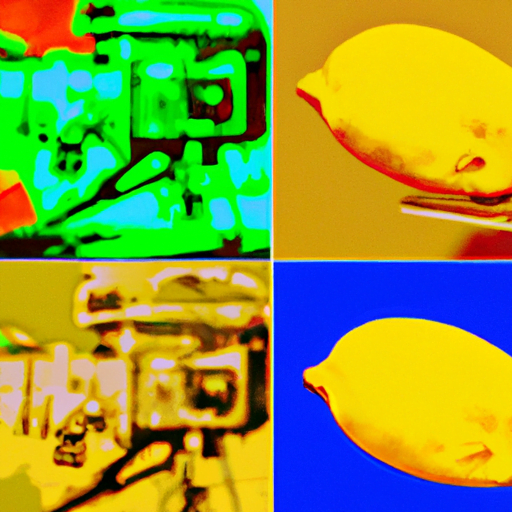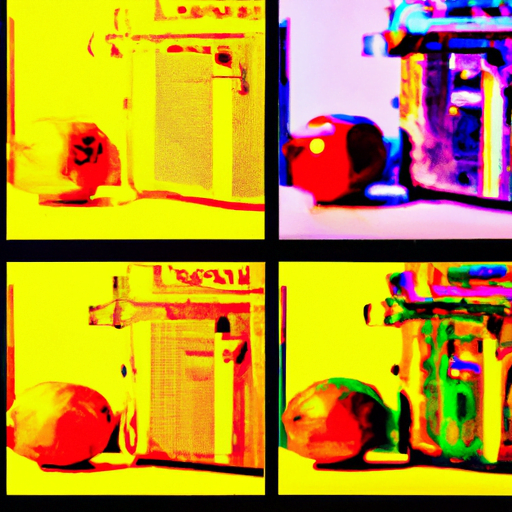
-
Table of Contents
The Role of Machine Learning in Automated Image Editing

With the rapid advancement of technology, machine learning has emerged as a powerful tool in various fields. One such field that has greatly benefited from machine learning is image editing. In this article, we will explore the role of machine learning in automated image editing and how it has revolutionized the way we enhance and manipulate images.
Understanding Machine Learning in Image Editing
Machine learning, a subset of artificial intelligence, involves training algorithms to learn patterns and make predictions or decisions without being explicitly programmed. When applied to image editing, machine learning algorithms can analyze vast amounts of data to understand the characteristics of different types of images and learn how to enhance or manipulate them effectively.
Traditionally, image editing required manual intervention by skilled professionals using software like Adobe Photoshop. However, this process was time-consuming and required expertise. With the advent of machine learning, automated image editing has become more accessible and efficient.
Automated Image Enhancement
One of the key applications of machine learning in image editing is automated image enhancement. Machine learning algorithms can analyze large datasets of professionally edited images to learn the patterns and techniques used by experts. This knowledge can then be applied to automatically enhance images by adjusting brightness, contrast, color balance, and other parameters.
For example, Google Photos uses machine learning algorithms to automatically enhance uploaded images. The algorithms analyze the content of the image and make adjustments to improve the overall quality. This saves users time and effort, as they no longer need to manually edit each image.
Object Removal and Manipulation
Another area where machine learning has made significant strides in automated image editing is object removal and manipulation. Traditional methods of removing objects from images involved manually selecting and editing the unwanted elements. However, machine learning algorithms can now automatically identify and remove objects from images based on patterns and training data.
For instance, Adobe’s Content-Aware Fill feature uses machine learning algorithms to intelligently remove unwanted objects from images. The algorithms analyze the surrounding pixels and fill in the gaps seamlessly, creating a natural-looking result. This feature has revolutionized the way photographers and designers edit their images, saving them valuable time and effort.
Style Transfer and Artistic Effects
Machine learning has also opened up new possibilities for applying artistic effects and style transfer to images. Style transfer involves applying the style of one image to another, creating a unique and visually appealing result. Machine learning algorithms can learn the style of famous artworks or photographs and apply it to any given image.
For example, Prisma, a popular mobile app, uses machine learning algorithms to apply various artistic styles to user-uploaded images. The algorithms analyze the style of famous paintings and apply it to the uploaded image, transforming it into a work of art. This demonstrates how machine learning can enable anyone to create stunning and artistic images without any prior knowledge or skills.
Challenges and Limitations
While machine learning has revolutionized automated image editing, it is not without its challenges and limitations. Some of the key challenges include:
- Training data: Machine learning algorithms require large amounts of high-quality training data to learn effectively. Obtaining and labeling such datasets can be time-consuming and expensive.
- Generalization: Machine learning algorithms may struggle to generalize well to new and unseen images. They may produce unexpected or undesirable results when faced with complex or unusual images.
- Ethical considerations: Automated image editing raises ethical concerns, such as the potential for misuse or manipulation of images. It is important to ensure that machine learning algorithms are used responsibly and ethically.
Conclusion
Machine learning has transformed the field of automated image editing, making it more accessible, efficient, and creative. From automated image enhancement to object removal and style transfer, machine learning algorithms have revolutionized the way we edit and manipulate images. While there are challenges and limitations, the potential for further advancements in this field is immense. As technology continues to evolve, we can expect machine learning to play an even greater role in shaping the future of image editing.
